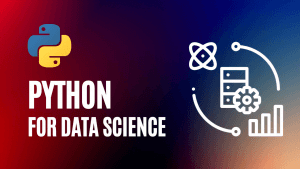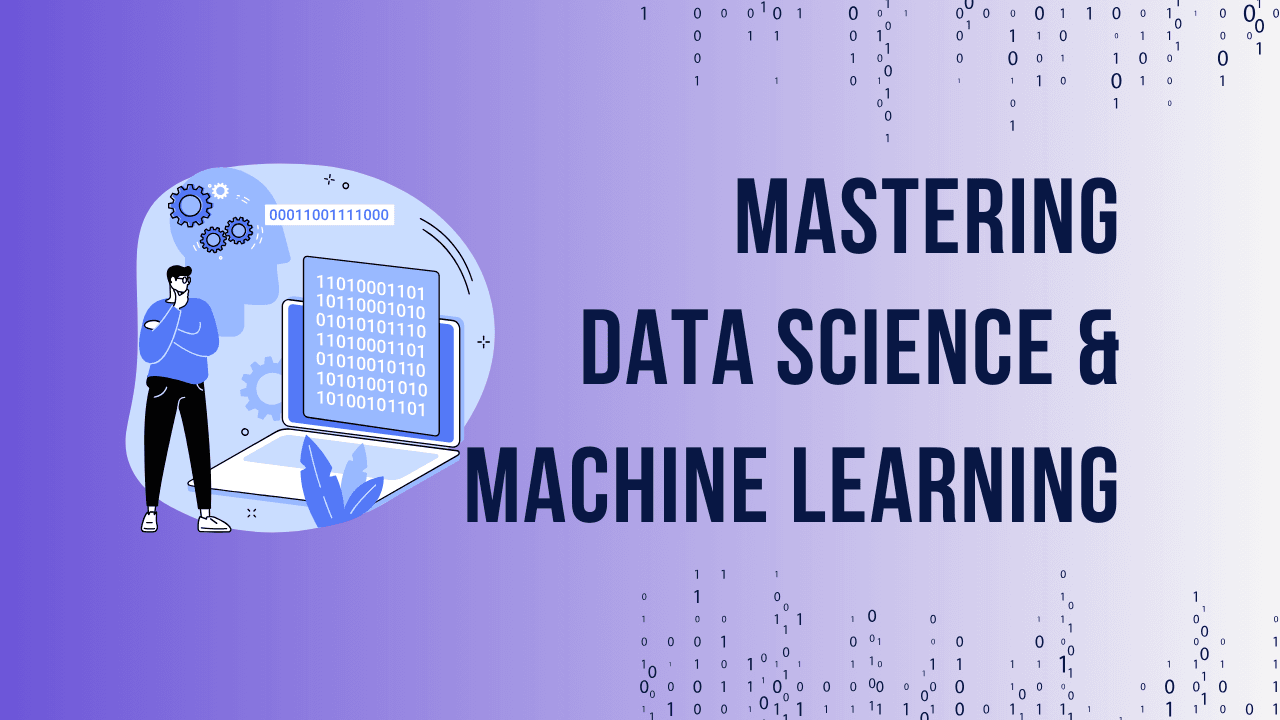Becoming a data scientist can be a challenging journey, especially if you’re going the self-taught route. You might have asked yourself, “Can I really do this on my own?” The answer is yes, and many have done it successfully. But how? Let’s dive into the steps and experiences that can help you carve out your path as a self-made data scientist.
The Early Days: Where It All Begins
Everyone’s journey into data science starts differently. For some, it’s an immediate passion for data and analytics. For others, it might be a gradual realization. But no matter how you start, the key is curiosity. The world of data is vast and intriguing, and it’s this curiosity that will fuel your learning.
Ready to take your data analysis skills to the next level? Check out our comprehensive Python for Data Science Course!
Why Data Science?
Before diving in, it’s essential to understand why you want to become a data scientist. Is it the love for numbers? The satisfaction of solving complex problems? Or perhaps the lucrative career opportunities? Identifying your motivation will keep you going, especially when the going gets tough.
Building the Foundation: Essential Skills to Learn
So, you’ve decided to become a data scientist. What’s next? It’s time to build your foundation. Here’s a breakdown of the core skills you’ll need:
1. Programming Languages
The bedrock of data science is programming. Start with Python, as it’s the most widely used language in the field. R is also highly valuable, especially for statistical analysis.
2. Mathematics and Statistics
Understanding probability, linear algebra, and calculus is crucial. These mathematical principles are the backbone of most data science algorithms.
Ready to take your data analysis skills to the next level? Check out our comprehensive Python for Data Science Course!
3. Data Manipulation and Cleaning
Pandas and NumPy are your best friends when it comes to cleaning and manipulating data. Mastering these libraries will allow you to prepare raw data for analysis.
4. Data Visualization
Learn tools like Matplotlib, Seaborn, and Tableau to present your data insights visually. Visualization is crucial for communicating your findings effectively.
5. Machine Learning
Start with supervised and unsupervised learning algorithms. Dive into scikit-learn to implement these models. Deep learning with frameworks like TensorFlow or PyTorch can come later as you advance.
Resources to Kickstart Your Learning
Online courses are a great way to start. Platforms like Coursera, edX, and Udacity offer comprehensive data science courses. Books like “Python for Data Analysis” by Wes McKinney and “Hands-On Machine Learning with Scikit-Learn, Keras, and TensorFlow” by Aurélien Géron are also invaluable.
Setting Up Your Learning Environment
To become self-taught, you need to set up an environment that encourages consistent learning. Here’s how to do it:
Ready to take your data analysis skills to the next level? Check out our comprehensive Python for Data Science Course!
1. Create a Learning Schedule
Dedicate specific hours of your day to learning. Consistency is key.
2. Use GitHub
Start storing your projects and code on GitHub. This not only keeps your work organized but also builds your portfolio.
3. Join Online Communities
Platforms like Kaggle and Reddit have vibrant data science communities. Engage, ask questions, and learn from others’ experiences.
The Importance of Hands-On Projects
Theory is important, but hands-on projects are where the real learning happens. Start small, perhaps with datasets from Kaggle or UCI Machine Learning Repository. As you progress, tackle more complex projects like building a recommendation system or a predictive model.
Documenting Your Journey
Maintaining a blog or a portfolio website where you document your projects and learning experiences can be highly beneficial. This not only helps reinforce what you’ve learned but also showcases your skills to potential employers.
Ready to take your data analysis skills to the next level? Check out our comprehensive Python for Data Science Course!
Overcoming Challenges: The Self-Taught Struggles
Let’s be honest; the road to becoming a self-taught data scientist is riddled with challenges. But these challenges are what make the journey worth it.
1. Impostor Syndrome
It’s common to feel like you don’t belong or that you’re not “good enough.” The key is to keep going, learn from your mistakes, and gradually build your confidence.
2. Information Overload
There’s a vast amount of information out there. Focus on one topic at a time. Prioritize your learning and don’t be afraid to skip over things that aren’t immediately relevant.
3. Staying Motivated
Set small, achievable goals. Celebrate your successes, no matter how minor they may seem. Remember, every data scientist started where you are now.
Building the Foundation: Essential Skills to Learn
So, you’ve decided to become a data scientist. What’s next? It’s time to build your foundation. Here’s a breakdown of the core skills you’ll need:
1. Programming Languages
The bedrock of data science is programming. Start with Python, as it’s the most widely used language in the field. R is also highly valuable, especially for statistical analysis.
2. Mathematics and Statistics
Understanding probability, linear algebra, and calculus is crucial. These mathematical principles are the backbone of most data science algorithms.
3. Data Manipulation and Cleaning
Pandas and NumPy are your best friends when it comes to cleaning and manipulating data. Mastering these libraries will allow you to prepare raw data for analysis.
4. Data Visualization
Learn tools like Matplotlib, Seaborn, and Tableau to present your data insights visually. Visualization is crucial for communicating your findings effectively.
5. Machine Learning
Start with supervised and unsupervised learning algorithms. Dive into scikit-learn to implement these models. Deep learning with frameworks like TensorFlow or PyTorch can come later as you advance.
Setting Up Your Learning Environment
To become self-taught, you need to set up an environment that encourages consistent learning. Here’s how to do it:
1. Create a Learning Schedule
2. Use GitHub
3. Join Online Communities
Conclusion
Becoming a self-made data scientist is not easy, but it’s incredibly rewarding. The skills you acquire, the challenges you overcome, and the projects you complete all contribute to your growth. Embrace the journey, and remember, every expert was once a beginner. Keep pushing forward, and you’ll get there.
Ready to take your data analysis skills to the next level? Check out our comprehensive Python for Data Science Course!
FAQs
1. How long does it take to become a self-taught data scientist?
The time it takes varies depending on your background and dedication. On average, it can take anywhere from 6 months to 2 years.
2. Do I need a degree to become a data scientist?
No, many successful data scientists are self-taught and do not have formal degrees in data science.
3. What are the best resources for learning data science on your own?
Some great resources include Coursera, edX, Udacity, and Kaggle. Books like “Python for Data Analysis” are also helpful.
4. How important is a portfolio for a self-taught data scientist?
A portfolio is crucial as it showcases your skills and projects. It’s often more important than a resume in the field of data science.
5. Can I work as a freelancer while learning data science?
Yes, freelancing is a great way to gain real-world experience while continuing to learn and build your portfolio.
Our Students Testimonials:
Ready to take your data analysis skills to the next level? Check out our comprehensive Python for Data Science Course!



